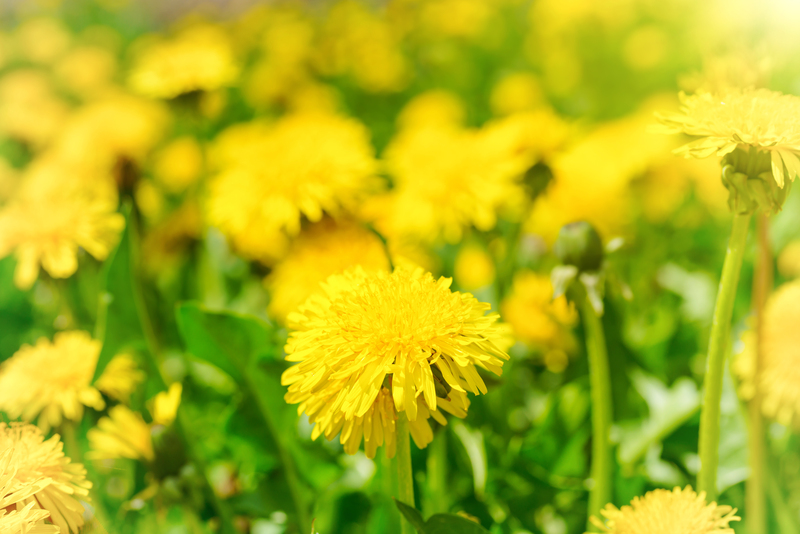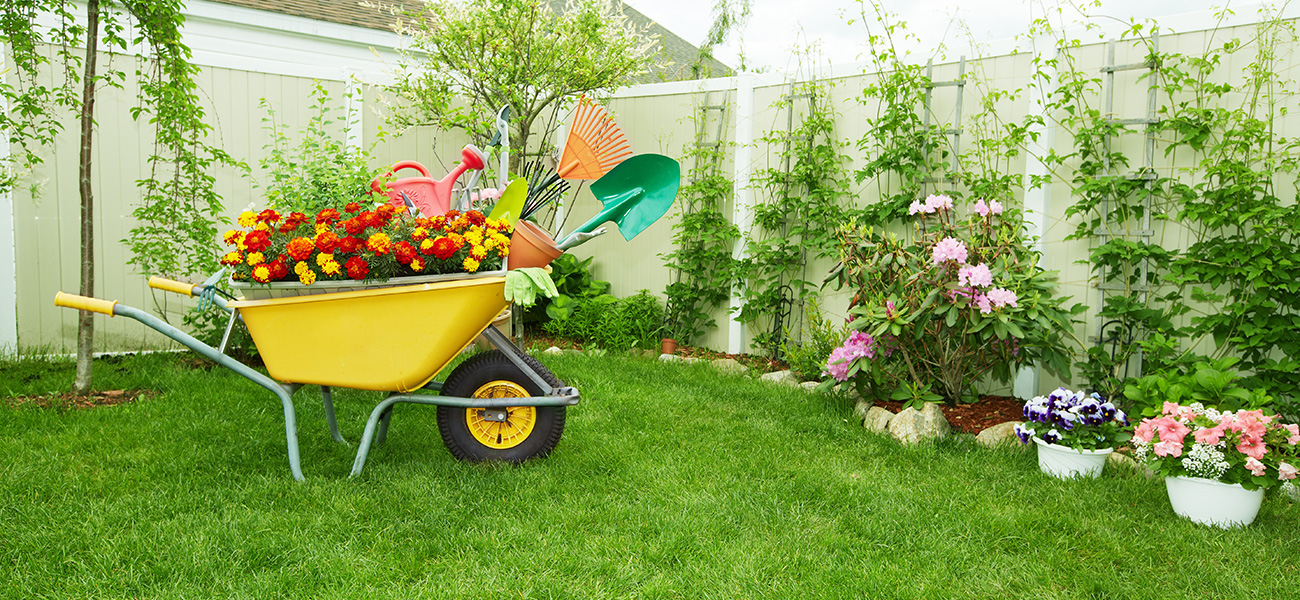Unlocking the Secrets of Herb Gardening Success
Posted on 19/06/2025
Unlocking the Secrets of Herb Gardening Success
Herb gardening is an age-old practice that brings joy, flavor, and natural beauty into any home or garden. Whether you are a seasoned green thumb or just starting your botanical journey, the secrets to herb gardening success can transform your growing experience. This in-depth guide will lead you through everything you need to know to nurture thriving, lush herbs, boost your kitchen with fresh flavors, and even promote health and wellness.

Why Practice Herb Gardening?
- Fresh Flavors: Home-grown herbs provide intense aromas and tastes that surpass store-bought alternatives.
- Cost Effectiveness: Growing your own herbs saves money in the long run, reducing recurring grocery bills.
- Health Benefits: Herbs are bursting with antioxidants, vitamins, and healing properties.
- Therapeutic Hobby: Tending a herb garden fosters relaxation, mindfulness, and even eco-consciousness.
- Aesthetic Appeal: Herbs offer lush foliage and flowers that elevate your living spaces.
Unlocking the full potential of your herb gardens requires both art and science. Let's dive into the key principles and hidden secrets behind herb gardening mastery.
Understanding the Fundamentals of Herb Growing
Choosing the Right Herbs for Your Environment
The foundation of herb gardening success starts with choosing the correct species for your climate, space, and lifestyle. Some herbs love the sun and warmth, while others prefer partial shade or cooler weather. Consider these popular options:
- Basil: Thrives in hot, sunny areas. An essential in Mediterranean dishes.
- Mint: Grows vigorously in moist, shaded spots. It's best grown in containers to contain spreading.
- Rosemary: Loves sun and well-drained soil; perfect for rockeries or pots.
- Parsley: Adapts well to sun or partial shade and grows quickly from seeds.
- Chives: Cold-hardy and easy to grow indoors or out.
- Cilantro (Coriander): Enjoys cooler seasons and needs regular water.
Pro Tip: Always check the specific requirements of each herb and match them to your local conditions for maximum success.
Soil: The Bedrock of Thriving Herbs
Healthy, well-structured soil is the gateway to robust herbs. Different herbs have unique preferences, but most require:
- Good Drainage: Herbs hate "wet feet." Avoid heavy clay soils that retain water.
- Ample Nutrients: Use compost or an organic fertilizer to enrich poor soils.
- Maintained pH: Most herbs thrive at a slightly neutral to slightly alkaline pH (6.5-7.5).
Soil Secret: Incorporate grit or sand to increase drainage for Mediterranean herbs like oregano or thyme.
Sunlight Exposure for Lush Growth
Sunlight is non-negotiable for strong, aromatic herbs. Most edible herbs prefer at least 6 hours of direct sun each day. If space indoors, position pots near south-facing windows, or use LED grow lights for optimum results.
- Basil, oregano, rosemary: Need full sun for maximum oil (and flavor) production.
- Mint, chervil, lovage: Tolerate some shade but still need bright, indirect light.
Observe your space and adjust the placement seasonally to maintain abundant growth all year round.
Starting Your Herb Garden: Seeds vs. Seedlings
One of the great debates--should you grow herbs from seed or buy young plants? Each has its pros and cons:
Growing Herbs from Seeds
- Wider Selection: Seeds offer more varieties and unusual cultivars.
- Cost-Effective: Seeds are cheaper, especially for large gardens.
- Control: Avoids possible pests or diseases from nurseries.
- Skill Required: More patience and attention needed for sowing and germination.
Buying Herb Seedlings
- Immediate Gratification: Enjoy instant green in your kitchen or garden.
- Saves Time: Particularly good for slow-growers like rosemary or bay.
- Limited Variety: Fewer options than seeds in most garden centers.
Secret Tip: Start with a mix: Easy-from-seed herbs like basil or cilantro, and store-bought seedlings for harder species. This provides a consistent supply throughout the season.
Container Herb Gardening vs. In-Ground Beds
The Perks of Container Herb Gardening
- Flexibility: Move pots to chase the sun or escape harsh weather.
- Soil Control: Perfect for managing pH, drainage, and nutrients.
- Pest Management: Containers make it easier to watch for pests and diseases.
- Space Efficiency: Ideal for balconies, windowsills, patios, or even indoors.
Advantages of In-Ground Herb Beds
- Higher Yields: More space for roots to flourish, producing bigger harvests.
- Low Maintenance: Larger soil volume retains moisture and nutrients, requiring less frequent watering.
- Natural Look: Rich beds blend seamlessly into landscape designs.
Choose a method (or mix!) that fits your space and goals for optimal herb gardening success.
Secrets to Herb Care: Watering, Feeding, and Pruning
Water Wisely for Happy Herbs
Overwatering is the number-one killer of herbs. The secret? Consistency and observation:
- Let the top inch of soil dry before the next watering.
- Water in the morning to prevent fungal diseases.
- Use drip irrigation or water at the base to keep leaves dry.
Container tip: Pots dry out faster, so regular checks are essential!
Feed for Flavor
- Incorporate organic compost into soil at planting time.
- Apply a balanced, slow-release organic fertilizer every 4 to 6 weeks during the growing season.
- Don't over-fertilize; too much nitrogen promotes leaf growth but can dilute flavor.
Pruning: The Secret to Bushy, Productive Herbs
- Regular Harvesting: Frequent snipping encourages branching and lush foliage.
- Pinch Off Flowers: Remove flower buds early to direct energy to leaves (unless harvesting seeds).
- Cut Smart: Use sharp scissors and take only what you need, leaving enough foliage for regrowth.
Insider Secret: Harvest in the early morning, when herb oil concentrations--and flavor--are at their peak.
Pest and Disease Management in Herb Gardens
Even in thriving gardens, pests and disease can strike. Prevention is your best armor. Here are proven tricks:
- Encourage natural predators: Plant companion flowers like marigolds or nasturtiums to attract beneficial insects.
- Use organic sprays: Neem oil, insecticidal soap, or homemade garlic sprays deter pests.
- Promote airflow: Good spacing and pruning prevent damp, crowded conditions where disease thrives.
- Inspect regularly: Turn leaves over to spot eggs, webs, or spots early.
Remember, healthy, well-fed herbs are always more resilient!
Secrets for Year-Round Herb Gardening Success
Grow Herbs Indoors During Winter
- Use deep pots with good drainage for basil, parsley, chives, or cilantro.
- Supplement with full-spectrum LED grow lights if natural light is scarce.
- Avoid drafts and keep away from cold, damp windowsills.
Extend Outdoor Seasons
- Mulch around herbs in autumn to protect roots from sudden temperature drops.
- Use cloches, cold frames, or row covers to shield from frost and wind.
- Grow perennial herbs like thyme, chives, or sage for continued harvests, year after year.
Keeping your herbs productive all seasons elevates your meals and enhances home wellbeing.
Harvesting and Preserving Home-Grown Herbs
Best Practices for Herb Harvesting
- Harvest when plants are young and leaves are tender for the best flavor.
- Snip stems just above a leaf node to encourage bushiness.
- Never remove more than 1/3 of the plant at one time.
Preservation Techniques for Year-Round Supply
- Drying: Hang stems upside down in a cool, dark, well-ventilated spot.
- Freezing: Chop fresh herbs and freeze in olive oil or water in ice cube trays.
- In Vinegar or Oil: Infuse clean sprigs in a sterilized bottle for flavorful condiments.
- Pesto: Blitz fresh basil, parsley, or cilantro with nuts, cheese, and oil for a freezer-friendly sauce.
Preserved herbs capture the taste of your garden for months to come!

Unconventional Secrets for Herb Gardening Success
- Companion Planting: Certain herbs, such as basil with tomatoes, improve growth and repel pests naturally.
- Avoid crowding: Even in limited spaces, give each plant room for air and light.
- Rotate Crops: Change planting spots each year to prevent disease build-up.
- Experiment: Try unusual or exotic herbs--like lemon verbena or shiso--to spice up your collection and expand your palate.
- Sensory Gardening: Grow herbs not just for flavor, but for fragrance and beauty--lavender, lemon balm, and scented geraniums are garden delights.
Every garden has its unique microclimates and personalities. Observe, adapt, and enjoy the learning process for continual herb gardening success!
Conclusion: Unlock the Rewards of Herb Gardening
By learning the secrets to herb gardening success, you unlock a world of sustainability, flavor, natural remedies, and creativity at home. From understanding soil and light, to nurturing seedlings, harvesting with care, and even troubleshooting, each step is a valuable part of the gardening journey. No matter your experience or available space, you can harness the magic of herbs for health, taste, and joy.
Start your herb gardening adventure today, and watch as even the smallest patch or pot transforms into an abundant, aromatic, and rewarding haven.
Ready to unlock the secrets of successful herb gardening?
- Pick a few easy-to-grow herbs to begin.
- Start small--windowsill pots, kitchen containers, or outdoor beds.
- Use the tips above to nurture, harvest, and savor your bounty!
Herb gardening success is just a seedling away. Happy Growing!



